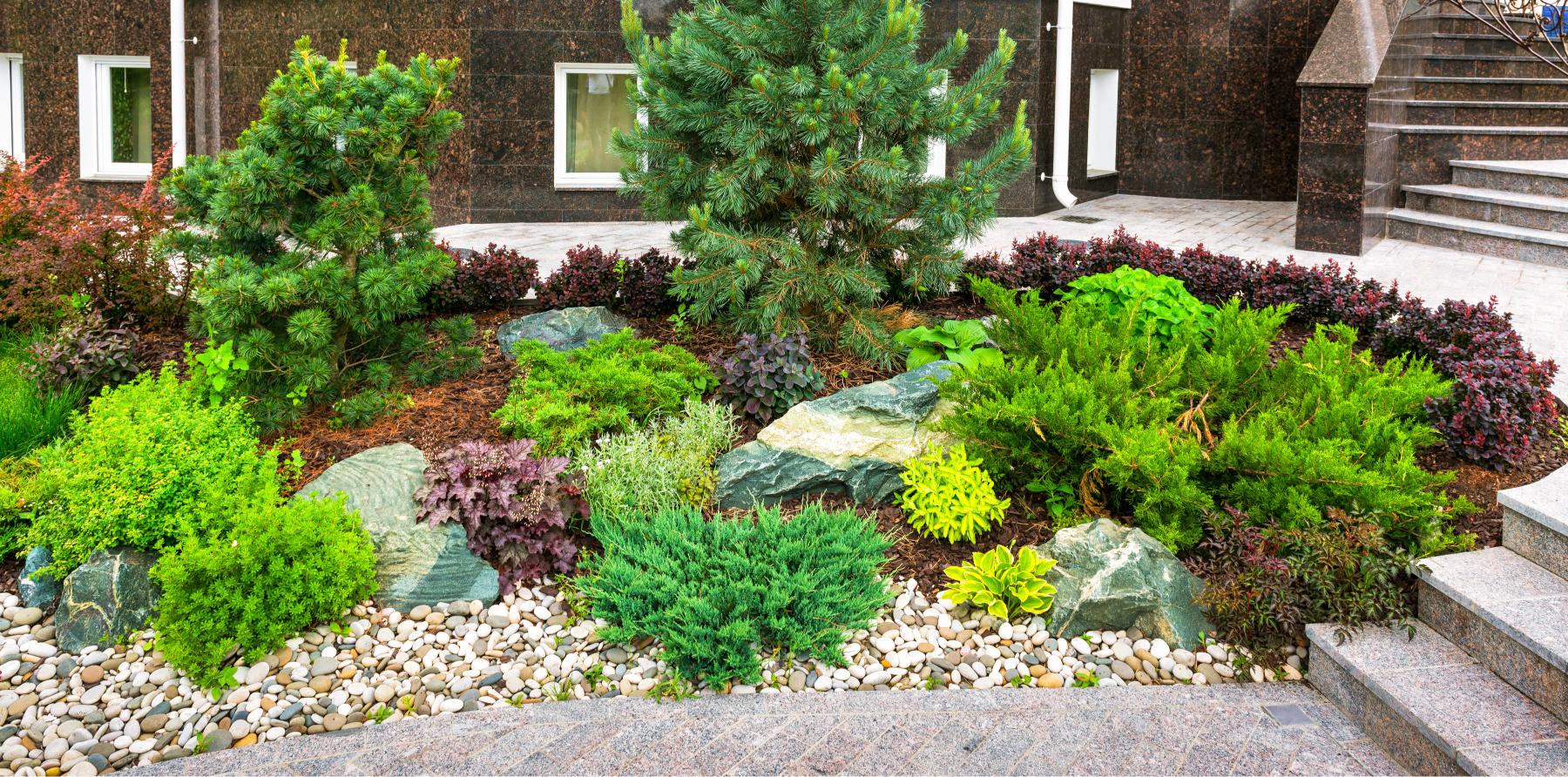Contents
Are you aware that minor alterations in your landscape design can have a substantial impact on the environment? Implementing eco-friendly practices in your outdoor space benefits the planet and also creates a healthier ecosystem around your home. From cutting back on water consumption to reducing chemical usage, these landscape design tips offer an environmentally friendly approach to enhancing your property. Let’s explore how each strategy can transform your outdoor space into a green oasis that promotes biodiversity and conservation.
Native Plant Selection
When creating an eco-friendly landscape, choosing indigenous plants is a crucial step that can greatly benefit your garden’s long-term health. Indigenous plants are those that naturally occur in your area and have adapted to the local climate, soil, and wildlife. By incorporating these plants into your landscape design, you aren’t just ensuring a visually appealing garden but also promoting biodiversity and supporting the local ecosystem.
Selecting indigenous plants provides several advantages. They require less water as they’re already adapted to the local rainfall patterns, reducing the need for irrigation and conserving water. Moreover, these plants are well-suited to the soil in your region, reducing the necessity for fertilizers and pesticides. By planting indigenous species, you’re also offering food and shelter for local wildlife, such as birds, bees, and butterflies, fostering a harmonious environment.
When choosing indigenous plants for your landscape, consider factors like sunlight, soil type, and water availability. Research the indigenous species that thrive in your specific area and plan your garden accordingly. Group plants with similar water and sunlight needs together to create efficient watering zones and optimize plant health.
Rainwater Harvesting Techniques
Discover the state-of-the-art world of rainwater harvesting techniques as you set out on a journey towards eco-friendly water management in your landscape design. Rainwater harvesting is an eco-friendly practice that involves collecting and storing rainwater for later use, reducing your dependence on municipal water sources and lowering your water bills. By implementing creative rainwater harvesting techniques, you can contribute to conserving water resources and creating a more environmentally friendly landscape.
One effective rainwater harvesting technique is installing a rain barrel system to capture runoff from your roof. This collected rainwater can then be used for watering your plants, washing outdoor surfaces, or even for non-potable indoor uses. Another method is constructing a rain garden, which is a shallow depression planted with native vegetation that absorbs rainwater and allows it to slowly infiltrate into the ground, replenishing the groundwater supply.
| Rainwater Harvesting Techniques | Description | Benefits |
|---|---|---|
| Rain Barrel System | Collects roof runoff for various uses | Reduces water bills, conserves resources |
| Rain Garden | Absorbs rainwater through native plants | Replenishes groundwater, reduces runoff pollution |
| Permeable Pavers | Allows rainwater to seep into the ground | Prevents erosion, recharges aquifers |
Composting for Soil Health
Enhance the liveliness of your landscape by delving into the world of composting for soil health. Composting isn’t just a way to dispose of kitchen and garden waste; it’s a beneficial practice that enriches your soil, reduces the reliance on chemical fertilizers, and promotes healthy plant growth.
Start your compost pile by layering green materials like fruit and vegetable scraps, grass clippings, and coffee grounds with brown materials such as leaves, straw, and shredded newspaper.
The magic happens when these ingredients decompose, creating nutrient-rich humus that boost soil fertility.
As your compost matures, it becomes a dark, crumbly substance that smells earthy and sweet. This “black gold” can be mixed into your garden beds or used as a top dressing for your plants.
Compost improves soil structure, helps retain moisture, suppresses plant diseases, and reduces the need for watering.
Integrated Pest Management Strategies
For a thorough approach to maintaining a healthy landscape, consider implementing Integrated Pest Management (IPM) strategies. By combining various eco-friendly techniques, you can effectively manage pests while minimizing harm to the environment and promoting biodiversity in your outdoor space.
Here are three key strategies to incorporate into your IPM plan:
Natural Predators: Encourage beneficial insects like ladybugs, lacewings, and praying mantises to thrive in your garden. These predators feed on common garden pests, helping to naturally control their populations without the need for harmful chemicals.
Companion Planting: Utilize the concept of companion planting by interplanting pest-repelling plants with your crops. For example, planting marigolds alongside vegetables can deter pests like nematodes and aphids, reducing the need for chemical interventions.
Healthy Soil: Focus on maintaining healthy soil by incorporating compost and organic matter. Healthy soil leads to stronger, more pest-resistant plants, reducing the likelihood of pest infestations.
Energy-Efficient Outdoor Lighting
How can outdoor lighting brighten your landscape and also contribute to energy efficiency and ecological balance? By integrating energy-efficient outdoor lighting solutions, you can enhance the beauty of your outdoor space while reducing your carbon footprint. LED lights are a fantastic choice for outdoor lighting as they consume less energy, have a longer lifespan, and emit a cozy, welcoming glow.
To further enhance energy efficiency, consider installing motion sensor lights that activate only when someone is present. This conserves energy and also provides an extra layer of security to your home. Additionally, solar-powered lights are an eco-conscious option that harnesses the power of the sun during the day to illuminate your landscape at night.
When designing your outdoor lighting layout, focus on accentuating key features of your landscape such as trees, pathways, and architectural elements. Using a mix of uplights, downlights, and path lights can create a visually pleasing and well-balanced lighting arrangement.
Choose fixtures crafted from environmentally friendly materials like upcycled metals or responsibly sourced wood to align with your dedication to eco-friendliness. By carefully selecting and positioning your outdoor lighting, you can create a warm atmosphere for gatherings, enhance the safety of your outdoor space, and reduce your environmental impact.
Recap
So there you have it, eco-warrior! By incorporating these five simple tips into your landscape design, you’ll be on your way to creating an enduring oasis right in your backyard. Who knew that saving the planet could look so good? Keep up the green thumb, and watch as your garden blossoms into a flourishing ecosystem that benefits you and our planet. Go ahead, show Mother Nature some love!




